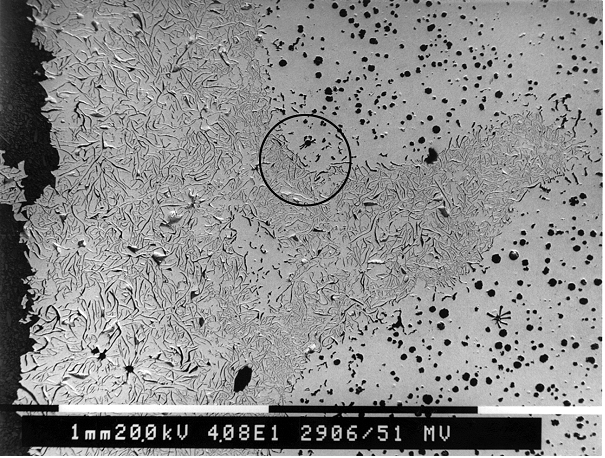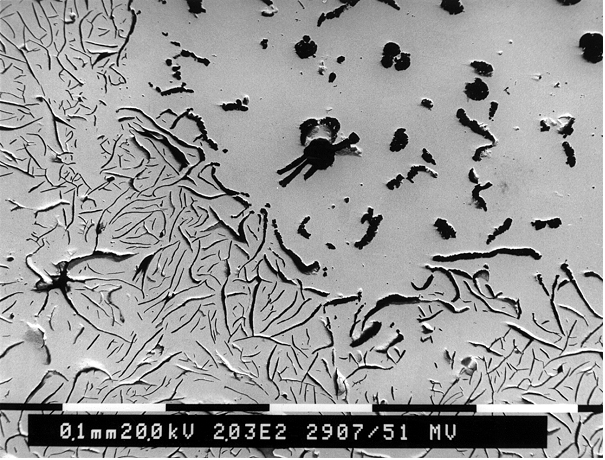Rim zone graphite degeneration
Degeneration of graphite on the surfaces between the mold and casting material, particularly of nodular graphite cast iron.
The causes lie in the influences of mold material parameters. Graphite degeneration is found not only in mold materials which contain sulfur but also in those which do not. The oxygen content in the mold material (MgO formation) is seen as the cause for this. However, the most common cause can be found in the sulfuration of the rim zone through phenol or furan resin-bound mold materials which are hardened with PTS (see No-bake process, Organic binder systems). In this process, the sulfur in the mold material uses up the dissolved magnesium which forms nodular graphite on the surfaces where the mold material touches the iron through the formation of magnesium sulfide, meaning that there is no longer any available to form nodular graphite.
The extent of this sulfurization depends on the wall thickness, the sulfur content in the mold material and the casting temperature. The spilt-off of the sulfur is a temperature-dependent process.
Additional references:
Graphite form
Graphite classification chart
Chunky graphite
Interfering element
Interference threshold



